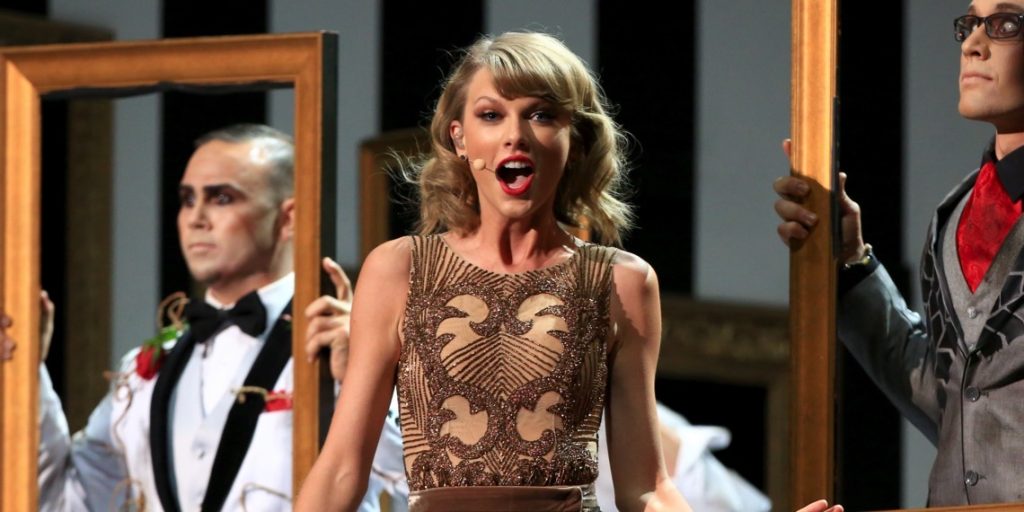Taylor Swift, the Grammy-winning artist known for her chart-topping hits and captivating performances, has found herself at the center of controversy once again. This time, it stems from an opinion piece published by The New York Times, which speculates about the singer’s sexuality. Swift’s camp, along with her loyal fans, have expressed their outrage at the article, calling it invasive and inappropriate. In this article, we will delve deeper into the controversy surrounding Taylor Swift’s sexuality and the backlash faced by the New York Times.
The New York Times Opinion Piece: A Step Too Far?
The New York Times, a renowned publication known for its insightful journalism, recently published an opinion piece that has stirred up quite a storm. The article suggests that Taylor Swift has been dropping hints about her queerness throughout her career. While some may argue that this is a harmless exploration of Swift’s artistry, others believe it crosses a line by invading her personal life.
According to a source close to Swift, the article’s invasive and speculative nature highlights a double standard in the industry. The source states that similar articles would not have been published about male artists, such as Shawn Mendes, whose sexuality has also been questioned by fans. This raises questions about the ethics and fairness of scrutinizing a female artist’s personal life in such a manner.
Taylor Swift’s Alleged Queer Hints: Unveiling the Evidence
The opinion piece in question presents what the writer labels as “evidence” of Taylor Swift’s queerness. One example cited is the singer’s music video for “You Need To Calm Down,” in which Swift is said to have dropped hints by dying her hair the colors of the bisexual flag. The author suggests that these “dropped hairpins” signify Swift’s identification with the LGBTQIA+ community.
While some may argue that these cues are merely coincidental or artistic choices, the article suggests that when viewed collectively, they paint a different picture. The author claims that Swift has been subtly expressing her queerness through various elements of her artistry for years, even before it became mainstream or marketable.
The Outrage: Invasion of Privacy or Valid Critique?
It comes as no surprise that Taylor Swift’s team has responded strongly to the New York Times op-ed. They have condemned the article as invasive, untrue, and inappropriate. The singer’s representatives have not only criticized the piece for its speculative nature but have also drawn attention to the gender bias evident in the coverage of Swift’s personal life.
Taylor Swift has been an advocate for the LGBTQIA+ community, and her support is well-documented. However, she has consistently denied being a part of the community herself. In her re-release of the “1989” album, she explained that she predominantly surrounds herself with women to discourage speculation about her romantic life. Swift has expressed frustration with how her personal choices are often sensationalized and sexualized by the media.
Denying Allegations and Advocating for Others
In a 2019 interview with Vogue, Taylor Swift opened up about her role as an advocate for communities she is not a part of. She acknowledged the importance of standing up for marginalized groups, even if she does not personally identify with them. Swift highlighted the challenges of navigating advocacy without making mistakes that can be amplified in the public eye.
Taylor Swift’s team’s response to the New York Times article is not an isolated incident. They have previously spoken out against false rumors, such as claims of a secret marriage to her ex-boyfriend Joe Alwyn. The singer’s publicist slammed the spread of fabricated lies and called for accountability in the wake of such damaging speculation.
The Clash Between Art, Privacy, and Publicity
The controversy surrounding Taylor Swift’s sexuality and the New York Times op-ed raises important questions about the boundaries between an artist’s personal life and their public persona. While some argue that artists should have the freedom to express themselves authentically, others believe that delving into their personal lives is invasive and unnecessary.
It is essential to recognize the impact of such articles on both the individuals involved and the broader conversation surrounding representation and identity. As fans and consumers of media, we must navigate the delicate balance between curiosity and respect, ensuring that artists’ autonomy and privacy are respected.
Taylor Swift’s journey as an artist and advocate continues to captivate the world. Regardless of the controversies and speculations surrounding her personal life, her music and influence remain powerful forces in the industry. As fans, let us focus on celebrating her talent and supporting the causes she champions, rather than indulging in invasive discussions about her sexuality.
